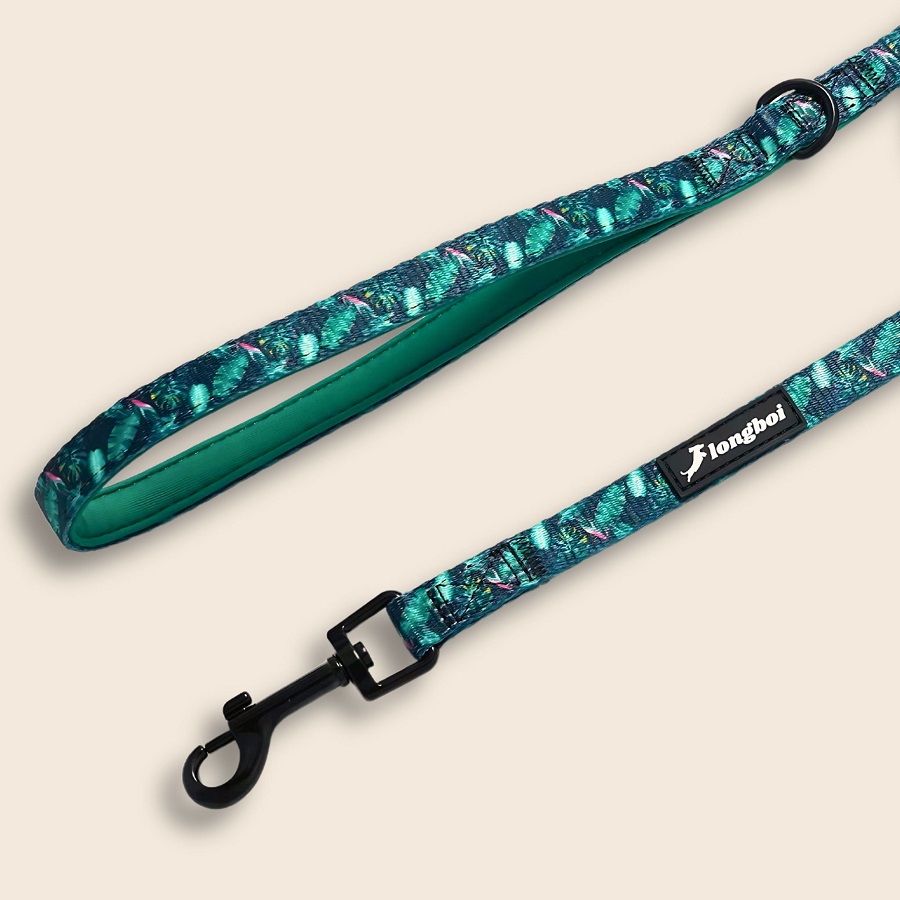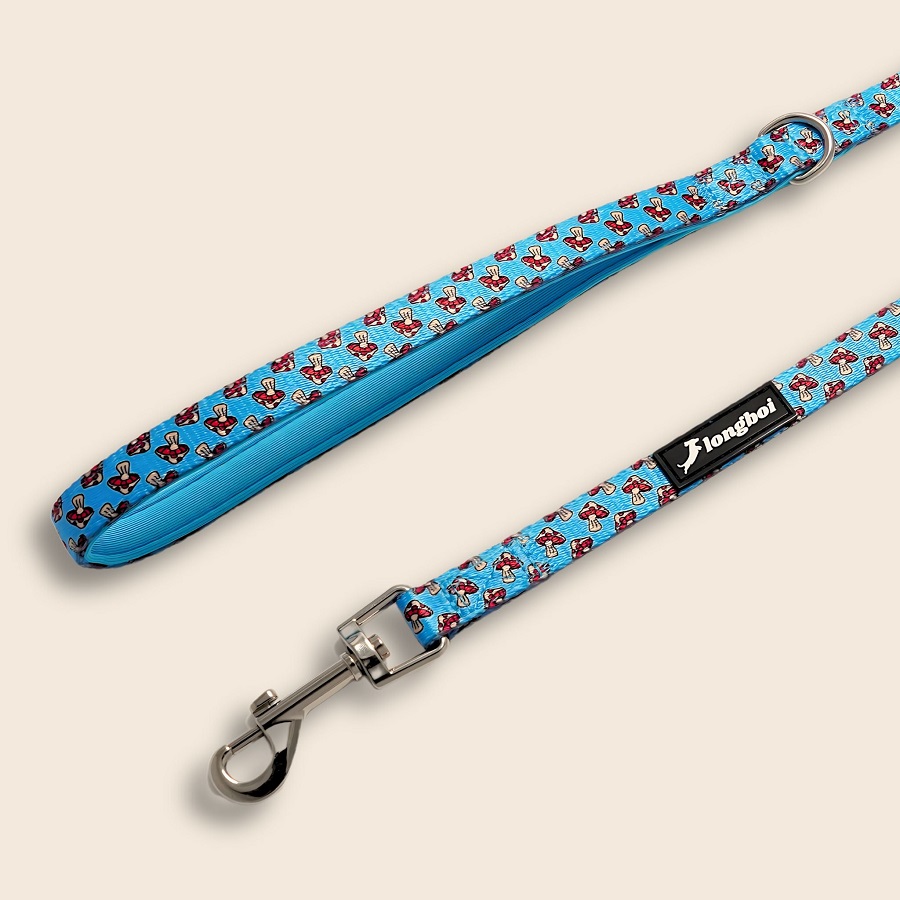When it comes to choosing the right leash for your pet, understanding the materials and their implications for durability and safety is crucial. Pet leashes are not just accessories; they are essential tools for ensuring the safety and control of our furry friends. This article delves into the various materials used in pet leashes, examining their benefits and drawbacks, durability factors, and safety considerations.
The Importance of Choosing the Right Leash Material
Understanding the Role of Leashes
Leashes play a vital role in pet ownership, serving as a means of control and communication between the owner and the pet. They are crucial for safety, especially in public spaces where potential hazards abound. The choice of leash material can significantly affect its performance and the overall experience for both the pet and the owner.
Why Material Matters
The material of a leash impacts its strength, weight, flexibility, and comfort. A poorly made leash can lead to accidents, such as breaks or slips, while a high-quality leash enhances safety and control. Understanding the different materials available can help pet owners make informed decisions that cater to their specific needs and the characteristics of their pets.

Common Materials Used in Pet Leashes
Nylon Leashes: Versatile and Durable
Nylon is one of the most popular materials for pet leashes. It is lightweight, durable, and available in a wide range of colors and patterns. Nylon leashes are often chosen for their affordability and versatility. They can withstand wear and tear from everyday use and are typically easy to clean.
The Benefits of Nylon
One of the main advantages of nylon leashes is their strength. They can handle a significant amount of pulling from strong dogs, making them suitable for various breeds. Additionally, nylon is resistant to water, which can be beneficial in rainy conditions. However, nylon leashes can fray over time, especially with heavy use, so regular inspections are necessary to ensure safety.
Leather Leashes: Classic and Sturdy
Why Choose Leather?
Leather leashes are often seen as a more upscale option. They are known for their durability and can provide a comfortable grip for the owner. High-quality leather leashes can last for many years, aging gracefully with use. They are also less likely to fray compared to nylon leashes.
Maintenance and Care
However, leather requires proper maintenance to keep it in good condition. It should be cleaned regularly and treated with leather conditioner to prevent cracking. Additionally, leather leashes can be more expensive than nylon options, which might be a consideration for budget-conscious pet owners.
Chain Leashes: Strength and Security
The Power of Metal
Chain leashes are made from metal links, providing exceptional strength and durability. They are often recommended for strong, aggressive, or large dogs that may chew through fabric or leather leash. The robustness of chain leashes can give owners confidence in their ability to control their pets.
Drawbacks of Chain Leashes
However, chain leashes come with their own set of drawbacks. They can be heavy, which may be uncomfortable for smaller dogs or for extended use. Additionally, chain leash can be cold in colder weather, potentially uncomfortable for both the pet and the owner. They also lack the flexibility of other materials, which can affect the ease of movement.
Biothane Leashes: A Modern Alternative
What is Biothane?
Biothane is a synthetic material made from a polyester webbing and a thermoplastic coating. It is designed to be durable, waterproof, and easy to clean. Biothane leashes are becoming increasingly popular among pet owners who want a leash that combines the benefits of both leather and nylon.
Advantages of Biothane
One of the main advantages of Biothane is its low maintenance. It doesn’t absorb moisture, making it resistant to mold and mildew. Additionally, Biothane leashes are often softer and more comfortable for pets, reducing the risk of chafing. They are available in various colors and styles, appealing to pet owners looking for aesthetic options without sacrificing functionality.

Durability Factors in Pet Leashes
Material Strength vs. Usage
The durability of a pet leash depends not only on the material used but also on the leash’s design and intended use. For example, a heavy-duty nylon leash might outperform a lightweight leather leash in certain conditions, particularly when exposed to harsh weather. Understanding the specific needs of your pet and the activities you engage in can help guide your choice.
Environmental Impact on Durability
Additionally, environmental factors such as humidity, sunlight, and temperature can impact the lifespan of a leash. For instance, prolonged exposure to sunlight can cause colors to fade and materials to weaken. Owners should consider their environment when selecting a leash, opting for materials that can withstand local conditions.
Safety Considerations in Leash Selection
Assessing the Risk of Breakage
Safety is paramount when choosing a leash. A broken leash can lead to dangerous situations, putting pets and others at risk. Regularly inspecting the leash for signs of wear, such as fraying or cracks, is essential. Choosing high-quality materials and well-constructed leashes can mitigate the risk of breakage.
Reflective and Safety Features
Additionally, many leashes now come with safety features, such as reflective stitching or padded handles, which can enhance visibility during nighttime walks. Pet owners should consider these safety aspects, especially if they often walk their pets in low-light conditions. Investing in a leash with added safety features can provide peace of mind.
Custom Leashes: Tailoring to Your Needs
The Rise of Personalized Leashes
In recent years, the trend of personalized pet products has extended to leashes. Many companies offer custom leash that can be tailored to fit specific needs, including length, color, and material. Custom leash can provide a unique style and ensure the leash meets the requirements of both the pet and the owner.
Benefits of Customization
Custom leashes allow pet owners to select the ideal length and thickness for their pets. For instance, small dog owners might prefer lighter, shorter leash, while large dog owners may need longer, thicker options for better control. This customization enhances the experience for both pet and owner, ensuring a more secure and comfortable fit.
Exploring Specialty Leashes: When to Consider Unique Options
Training Leashes: Tools for Teaching
Training leashes are specially designed to assist with obedience training and behavior modification. Typically longer than standard leash, they allow for more freedom of movement while still providing control. These leash are often made from durable materials, such as nylon or Biothane, to withstand the rigors of training sessions. Many trainers recommend using a training leash in conjunction with harnesses or collars specifically designed for training, as this combination can enhance communication and reduce the risk of injury.
Hands-Free Leashes: Convenience for Active Owners
For pet owners who enjoy jogging, hiking, or biking with their dogs, hands-free leashes can be a game-changer. These leashes typically feature a belt or strap that attaches to the owner’s waist, allowing for greater freedom of movement. Made from lightweight yet durable materials, hands-free leash provide security while keeping both hands available for other activities. When selecting a hands-free leash, it’s crucial to ensure that it has safety features, such as quick-release mechanisms, in case of emergencies.

Conclusion: Making the Right Choice for Your Pet
Weighing Your Options
In conclusion, the choice of leash material is a significant factor in ensuring the safety and comfort of your pet. Each material—nylon, leather, chain, and Biothane—has its advantages and disadvantages, making it essential for pet owners to consider their specific needs and preferences.
Final Thoughts
By taking the time to explore the various options available, pet owners can make informed decisions that enhance their walking experience. A well-chosen leash not only contributes to the safety and control of pets but also enriches the bond between owner and animal. Investing in a high-quality leash tailored to your pet’s needs is a step toward a safer, more enjoyable outing.










